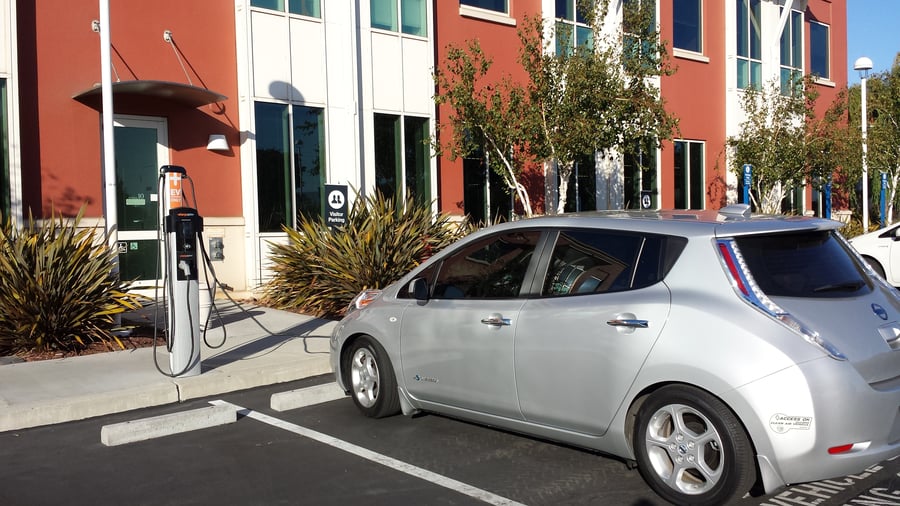The U.S. Environmental Protection Agency’s (EPA’s) plan to regulate carbon emissions is just the latest challenge facing the U.S. electric power system. Technological innovation is disrupting old ways of doing business and accelerating grid modernization. Earlier this year, AEE released Advanced Energy Technologies for Greenhouse Gas Reduction, a report detailing the use, application, and benefits of 40 specific advanced energy technologies and services. This post is one in a series drawn from the technology profiles within that report.

Plug-in electric vehicles (PEVs) are emerging as an important vehicle platform in the United States and globally. PEVs are powered completely or in part by rechargeable batteries. PEVs include battery electric vehicles (BEVs) such as the Nissan Leaf and Tesla Model S, which need to be recharged through external power sources, and plug-in hybrid vehicles (PHEVs) such as the Chevy Volt and Toyota Prius Plug-in, which contain both a battery and a gasoline-powered engine. BEVs typically have ranges of about 100 to 250 miles, while PHEVs have electric-only ranges of about 20-40 miles, after which they operate on gasoline like regular hybrid vehicles.
Although sales of PEVs are relatively small, the market is growing quickly. Sales were just under 100,000 units in 2013 in the U.S., or about 0.7% of total vehicle sales, up from approximately 52,000 in 2012. The market has seen tremendous growth, with U.S. revenues jumping from $700 million to $3.6 billion between 2011 and 2013. With market penetration at its early stages, the upfront costs of PEVs are higher than traditional vehicles. However, electric drivetrains are much more efficient than gasoline or diesel drivetrains, achieving gasoline-equivalent fuel economy in excess of 100 MPG, creating operational savings, and as battery costs decline and manufacturing scales up, vehicle costs are expected to fall. U.S. Corporate Average Fuel Economy standards (CAFE) for new vehicles, which are set to double to about 41 MPG by 2021, are providing impetus for auto manufacturers to produce PEVs that are successful in the marketplace.
PEVs are beneficial in both reducing emissions and providing grid energy storage. PEVs reduce transportation-related greenhouse gas emissions, even when considering power plant emissions associated with vehicle charging. This benefit varies depending on the power generation mix, but even in regions with relatively high electricity-related emissions there is a net benefit. Assuming 7.6 million EVs are deployed on U.S. roads by 2020 (of the 254 million cars on the road today), up to 5% of annual U.S. emissions could be reduced. Overnight charging of PEVs can also help increase utilization of off-peak, low-carbon generation (such as nuclear, which benefits from continuous operation, and wind, which often produces strongly at night). With full, bi-directional integration with the grid, PEVs can also be used for energy storage, providing grid support functions such as peak shaving, load shape smoothing, renewables integration, and power quality services. As the size of the PEV fleet grows, the ability to aggregate and manage vehicles in a coordinated fashion has the potential to create a large source of energy storage. Using PEV batteries as storage for grid support is currently in deployment in a number of pilot projects around the country, including by the U.S. Army and NREL at Fort Carson and by the University of Maryland in partnership with NRG and BMW.
